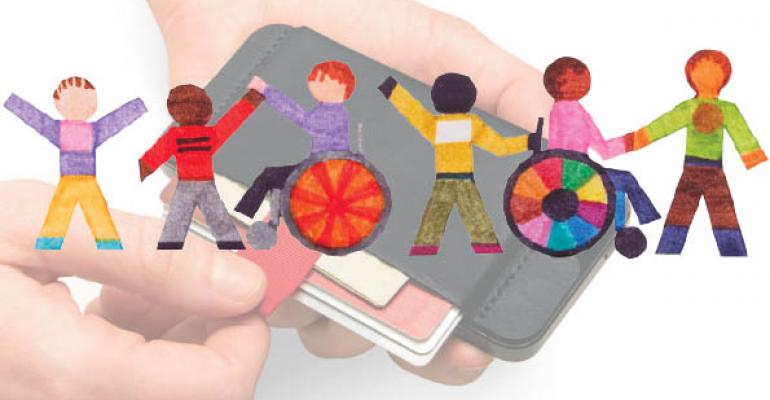From my table, I watch as Hal Wright pulls into the parking lot of Lucile’s Creole Café just off Santa Fe Drive. We meet here for breakfast every now and then. Hal likes Lucile’s. He says that their beignets—at least as far as Denver goes—are the closest he’s found to those of his native Louisiana.
This particular morning is very cold and snowy. Our drill is nicely predictable, so I order him a chicory coffee while he’s still parking. A few minutes of small talk, and then:
“I’ve been reading a touching letter a woman sent me. Her son was born with Down syndrome 18 years ago. The letter is 30 single-spaced pages describing the love and care he needs and details a week in his life.”
Why would someone send such an unusual letter to Hal Wright? Ever since publication of his 2013 book The Complete Guide to Creating a Special Needs Life Plan, Hal occasionally hears from parents of physically or mentally challenged children.
That’s not surprising. Hal writes from the heart and readers, from time to time, are moved to respond personally to him. The letter in question is but one component of a “Letter of Intent” that’s described in the book.
For the book itself, Hal had a good editor. For the actual name of the book—well, the second part of the title turned into a mouthful: A Comprehensive Approach Integrating Life, Resource, Financial, and Legal Planning to Ensure a Brighter Future for a Person With a Disability.
Nonetheless, all of that is delivered to the reader, and with good reason...
Hal’s daughter was born with Down syndrome 28 years ago. When she entered high school, Hal and his wife spent countless hours educating themselves as they pulled together a plan for their daughter to have the best life possible as an adult.
They were stunned to learn how many disparate threads had to be woven together. There was no single comprehensive source of information.
Hal says: “It was like putting together a complicated jigsaw puzzle without a picture on the box. Being an engineer by training, I was accustomed to designing things and thinking systematically.”
As they learned to navigate the systems that would impact their daughter’s care, Hal knew he could be a great help to other families facing similar challenges.
So, he left his executive position with a major aerospace firm and went back to school to gain Certified Financial Planner certification. A short time later, he opened a financial-planning firm serving parents of individuals with special needs.
That was 15 years ago. Hal retired in 2012 to write his book.
These days, he does educational programs for parents and is working on a second book.
This morning, he’s telling me about a new idea:
I’ve been designing a card to carry around in my wallet in case something happens—something like a car accident that leaves my wife and me unconscious, or worse. The card will alert first-responders that we have a daughter at home with special needs, that she needs intervention for her safety, and list the names and phone numbers of whom to contact to go to our home to be with her.
I ask him: “Do you plan to market the card?”
“No. Most families can come up with their own card. I’ve thought that something like a medical bracelet might work, too. Maybe agencies will hand them out to the families they serve." (Enterprising social-service managers out there, please take note.)
"My big concern," Hal continues, "is to get the word out to parents and care-givers. They need to always have—on their person—a way to communicate with first-responders in the event that they are unable to do so verbally.”
Pass it on.






